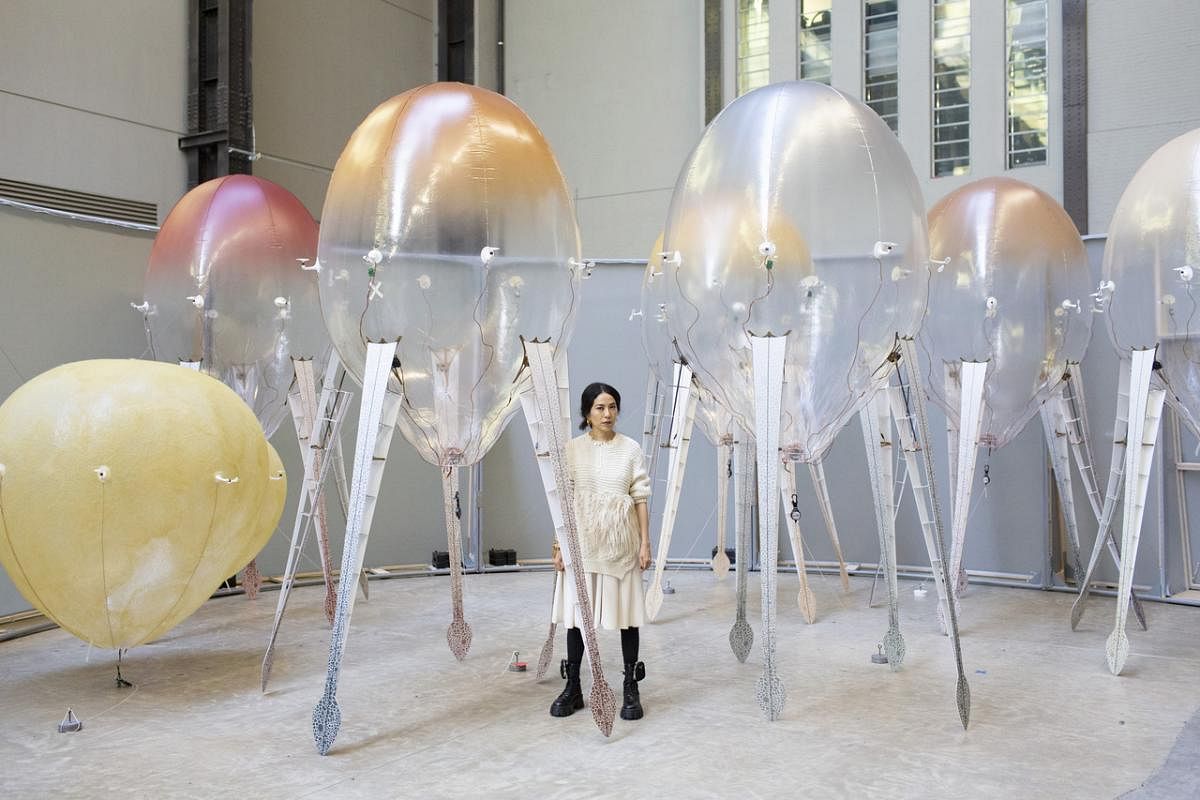Invasion of the aroma machines at London exhibition

Six years ago, artist Anicka Yi created an exhibition on a theme that now feels eerily prescient: human fears of viral contagion.
After an Ebola case was confirmed in New York, unsettling city life and causing months of anxiety, Yi set up tents at The Kitchen arts venue in New York City to display petri dishes containing bacteria she had gathered from 100 women.
For Yi, 50, the germs and microbes that pass among people are key to understanding how humans respond to one another. And the air that people breathe is where much of this molecular exchange takes place.
Now, as she takes over Turbine Hall at Tate Modern in London for a solo presentation running from Tuesday to Jan 16 next year, Yi has made air her primary material and subject.
When visitors enter the cavernous hall, they will encounter a series of giant airborne creatures that look like the ethereal cousins of jellyfish and amoeba, brought to life with drone technology and algorithms.
The hall will also be filled with another, less tangible, suggestion of microbial life: an aroma that will change from week to week, conjuring the fragrant history of the Bankside area around the museum, from the Precambrian era to the Machine Age.
Among the scent profiles Yi has created are those that represent more noxious periods in London history, including the smells of cholera and the bubonic plague.
The ecosystem of Turbine Hall, as Yi has envisioned it, "is the site of all this biological entanglement", she said in a recent video interview from London, where she was installing the "aerobes", or "biologised machines" as she calls them, that float and undulate in the space.
"I want to foreground the idea that air is a sculpture that we inhabit," she said.
Yi's floating forms respond to the air in Turbine Hall in unpredictable ways, with each of the tentacular, bulbous creatures programmed to display its own set of behaviours. Heat sensors installed throughout the space allow them to detect the presence of visitors - and may prompt one or two of them to float down, hovering a few metres over visitors' heads.
With her Turbine Hall presentation, Yi hoped to "decentre the human" and cultivate empathy for nature and machines, creating a sense that people can all co-exist in harmony in a perpetual state of exchange and mutual learning.
"The attempts to seal the borders - and I mean that in all senses it might conjure - is symptomatic of our fears and anxieties," Yi said. Instead, she said, people should let it all flow together. "There is nothing but ceaseless porousness."
NYTIMES
SEND US YOUR PICTURE
Do you have a Big Picture to share with us? The image should be a recent one, with minimal digital enhancement. Send it to stimage@sph.com.sg with the title BIGPIC followed by a description of your photo. Images should be in jpg format and no more than 2MB in size.
Join ST's Telegram channel and get the latest breaking news delivered to you.
